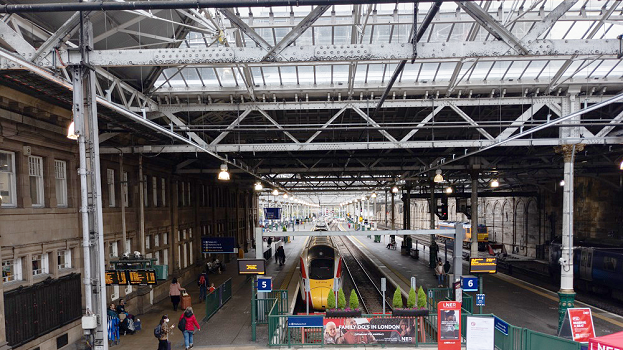Diagram changes at Edinburgh’s Waverley station led to distraction concerns.

LNER trains at Edinburgh Waverley station ©JM Ritchie/Shutterstock
Reporter's concern
- Weekend diagram changes mean fewer dispatchers, but the same number of train services to dispatch.
- Dispatchers feel the pressure to keep up with train services and could be distracted from their safety-critical duties, so passengers could be injured.
- The changes have made dispatching monotonous.
- The dispatcher must be at the platform 15 minutes before the train service departs and five minutes after, but this five-minute wait can overlap with the following train service. This is made worse when a dispatcher must go to the opposite end of the station for their next service.
- When services are disrupted, it feels harder to keep up, and communication between staff could break down. During disruption, up to three services can need to be dispatched at the same time.
They asked London North Eastern Railway (LNER) to review the weekend diagram to identify where more staff could be rostered or how to break up the number of services in a row. They also asked for a supervisor to coordinate dispatching during disruption, or to consider planning, producing and briefing a procedure for prioritising services.
LNER's response
- Before introducing diagram cards, we had feedback that duties were not being allocated fairly.
- We changed the roster and reviewed diagrams six months ago to ensure a resilient and robust roster. The frontline team and manager were involved in developing diagram cards to ensure the work was allocated fairly and consistently.
- We review rosters and diagrams regularly and teams have the chance to give continual feedback.
- The station delivery manager (SDM) is reviewing the weekend diagram. There is no duty team leader (DTL) to cover the early Saturday shift, so the SDM is looking at changing this.
- The procedure is for a dispatcher to be on the platform 15 minutes before the service departs, to manage platform-train interface (PTI) risk. This is a guide, and we know it is not always possible.
- If a dispatcher is delayed, we expect them to tell their team leader or information controller (IC), who can reassign a service to someone else.
- The IC, DTL and SDM help co-ordinate the duties of dispatch staff. Others are on call for support.
- During disruption, the DTL or IC takes the lead in co-ordinating and prioritising services. The SDM does this if these are not on duty. They consider whether customers are on the service, how many, where it is going and whether customers have onward connections.
- We observe and assess dispatchers regularly, including how they manage PTI risk and workload. Training also includes skills such as staying alert during safety-critical duties.
- The SDM has liaised with DTLs and ICs to confirm staff have adequate training and offer support to prioritise and develop a training plan if needed.
View the full report at View the full report
Find out more
Raise a concern
Case studies
